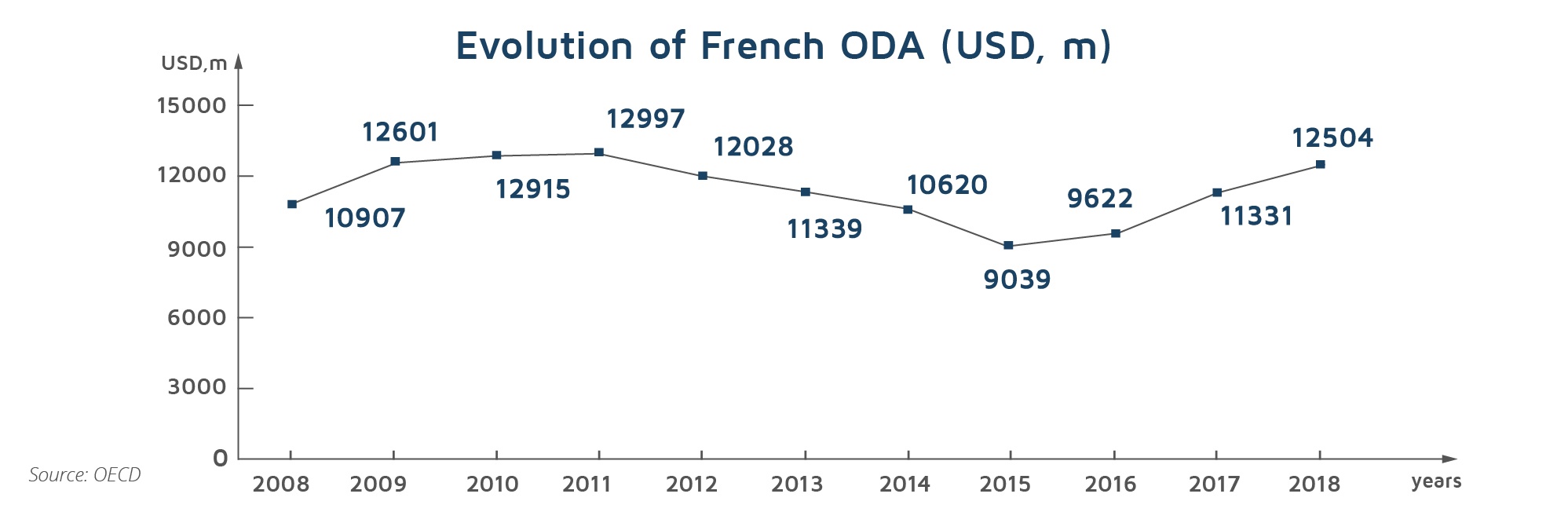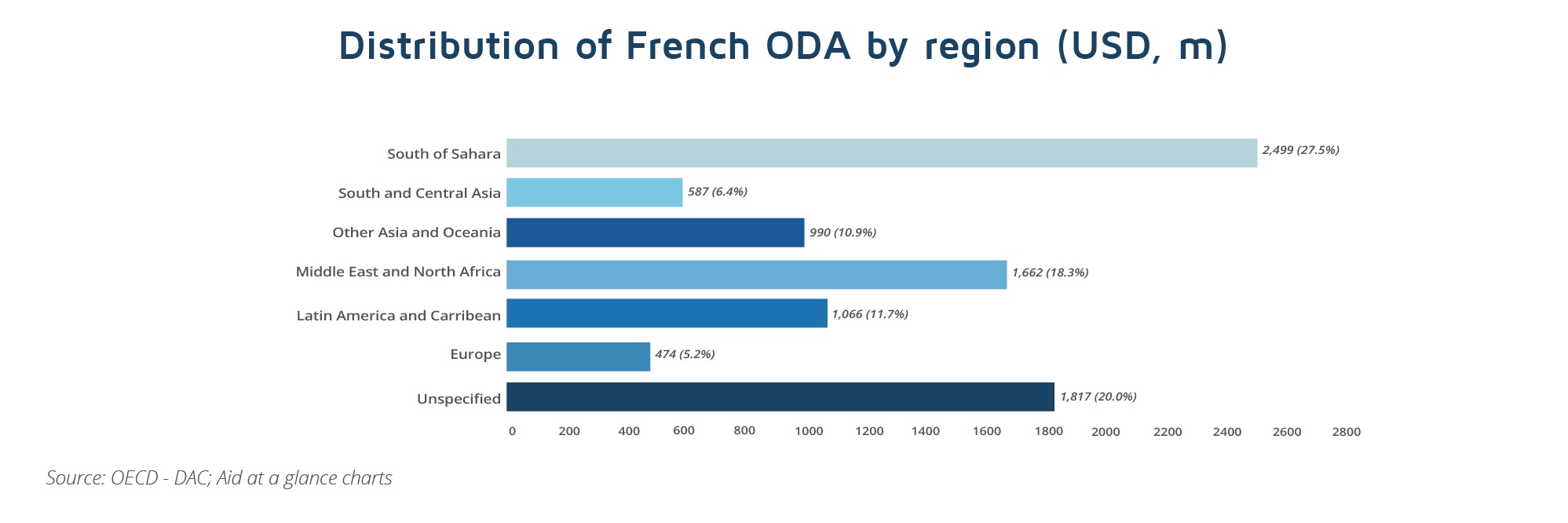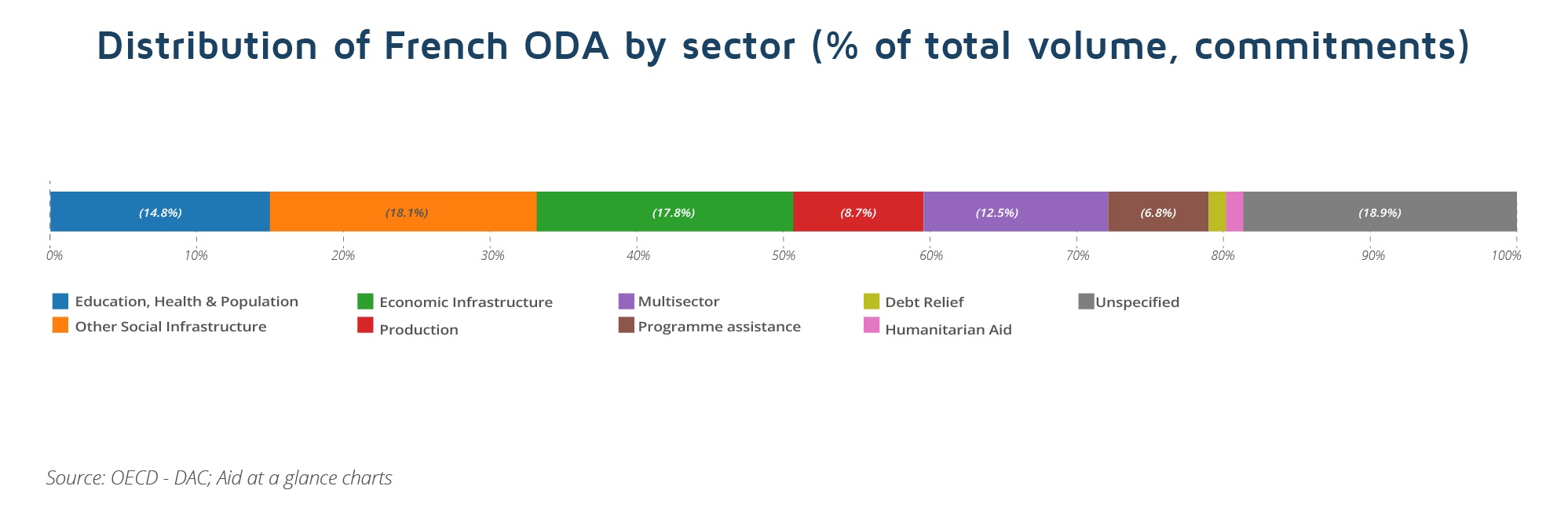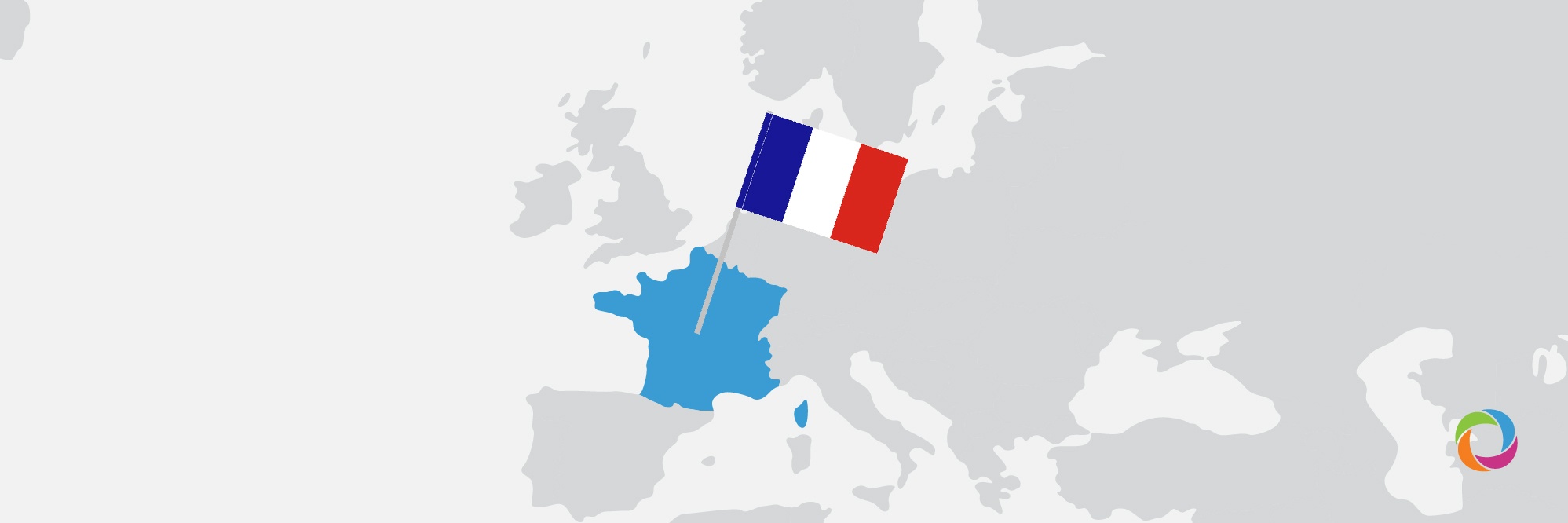France is one of the most important donor countries in the International Development sector. Since President Emmanuel Macron took office in 2017, the volume of development funding provided by the country has grown on the back of the President’s ambitious plans concerning foreign aid. In today’s article, DevelopmentAid brings you the story of the ODA legacy inherited by the young French President and the main figures behind the current French development assistance.
French development assistance at a glance
France is the fifth largest donor in the Development Assistance Committee. In 2018, the country spent over US$ 12.5 billion in disbursements to developing countries. This represents approximately 0.44% of its gross national income. The ODA volume has grown significantly over the last three years after reaching its lowest level in 2015 (US$ 9 bn).

The budget structure of the French ODA and its funding architecture is quite complex. There are 24 separate budget programs across 13 budget categories, managed by 14 ministries, along with extra-budgetary funds. Four of the bodies through which the ODA is managed share the biggest volumes of aid: the French Development Agency (AFD) with 49% of French development funds funneled through this institution in 2017, the Ministry of Foreign Affairs (14% of ODA), the Government (12.5%) and the Ministry of Economy, Finance and Industry (9.5%). The remaining roughly 15% was disbursed through other agencies.
According to the Ministry of Europe and Foreign Affairs of France the two main budget programs of the Official Development Assistance mission, according to the Ministry of Europe and Foreign Affairs of France, are concentrated in the 19 “priority” countries. These are francophone least developed countries (LDC), mostly France’s former colonies on the African continent.

From a geographical point of view, in 2017 over 40% of French ODA was been funneled to the African continent and the Middle East (a volume of almost US$ 4 bn) while South and Central Asia and Europe, benefitted from a little over US$ 430 m each.

From the sectorial point of view, economic infrastructure is the most preferred sector for French development funds with over 20% of the commitments referred to this sector. The social infrastructure sector accounted for over 17.8% of the French ODA in 2017 while Education, Health and Population was the sector that received almost 17% of ODA.

Lower-middle income countries and upper-middle income countries benefited from almost two-thirds of the ODA provided by France in 2017 which represents almost US$5 billion.
Emmanuel Macron and the return of the international aid to the top of France’s political agenda
In the four-year period prior to Macron’s election as President, French ODA dropped significantly from 0.45% (2012) to 0.38% (2016) of its gross national income (GNI), equivalent to a decline in volume from US$10.6 bn to US$9.6 bn.
When Emmanuel Macron (39) took office as President of France on May 14th, 2017 at the Élysée Palace, he promised ambitious reforms to the French foreign aid mechanisms. France ranked fifth among the members of the OECD DAC for its ODA volume in that year. Among the French President’s plans were to “escalate ODA” and reach 0.55% of GNI by 2022. He further aimed to achieve the international target of 0.7% which, according to the most recent information, is met by only 4 out of the 28 EU countries).
“France’s partnership and international solidarity policy is part of the drive to achieve the United Nations Sustainable Development Goals. To reach these goals, I have decided that our new policy will benefit from increased resources, after a long period of shrinkage, of 0.55% of GNI by 2022” the French President stated during his speech in 2018 at the Ambassador’s conference.
At the beginning of his presidential term, Emmanuel Macron also made some serious statements regarding the climate agenda. Firstly, he met with former California Governor Arnold Schwarzenegger and discussed climate change and then he addressed a joint meeting of US Congress calling on the United States to engage more in global affairs and to rejoin the Paris Climate Agreement.
Furthermore, the new French Government provided a list of the 19 “priority’ countries to benefit from French development funds. At the same time, the four major areas of intervention were drawn up for the 2017 – 2022 period:
-
-
-
- The fight against climate change and the preservation of the environment;
- Human development and gender equality;
- Economic development for social progress;
- Strengthening human rights, stability and peace.
-
-
The French President also promised to implement an “ambitious” evaluation policy to track transparently the results of French development assistance and an “extensive restructuring” around the French Development Agency.
The change is yet to come
In 2018, OECD published the “Peer Review: France 2018” report. The document welcomes the new President’s initiatives and highlights several challenges for France to overcome. These are the low level of only 14% of bilateral ODA allocated to priority countries in 2016; only 19% of bilateral ODA allocated to least developed countries compared to a 37% average for OECD countries; and the low level of humanitarian aid (only 1.3% of its ODA, compared to the DAC average of 11%). The review also underlined the importance of changing the structure of the French ODA. Thus, in 2016, France relied strongly on the loan instrument which accounted for 28% of total gross ODA. In 2017, this value, according to the French Foreign Ministry documents, will not significantly change.
The OECD also mentions the low level of the grant element of French ODA which decreased in the 2012-2016 period. It is not yet clear whether this trend has halted or suffered significant changes since the information for 2018 is yet to be published. The OECD report explains the trend because of the use of the existing AFD business model which is based more on loans than grants. This encourages the agency to invest in middle-income countries and potentially profitable sectors. Furthermore, according to the OECD, this policy partially explains the “difference between France’s stated priorities and actual ODA allocations”.
At the same time, a report published by the National Assembly of France issues, amongst other suggestions, a recommendation to “continue to create a favorable environment for French companies, and not to favor companies, such as Chinese companies, which do not respect the same quality standards and the same rules for untying aid”.
Having seen a remarkable growth in the overall French ODA volume in recent years on the one hand and the challenges in its structure on the other, Emmanuel Macron has pressed for continuous development and an increase in the role of French in the International Development Sector. You can keep up-to date with the latest evolution of the French Official Development Assistance by subscribing to the DevelopmentAid newsletter.

